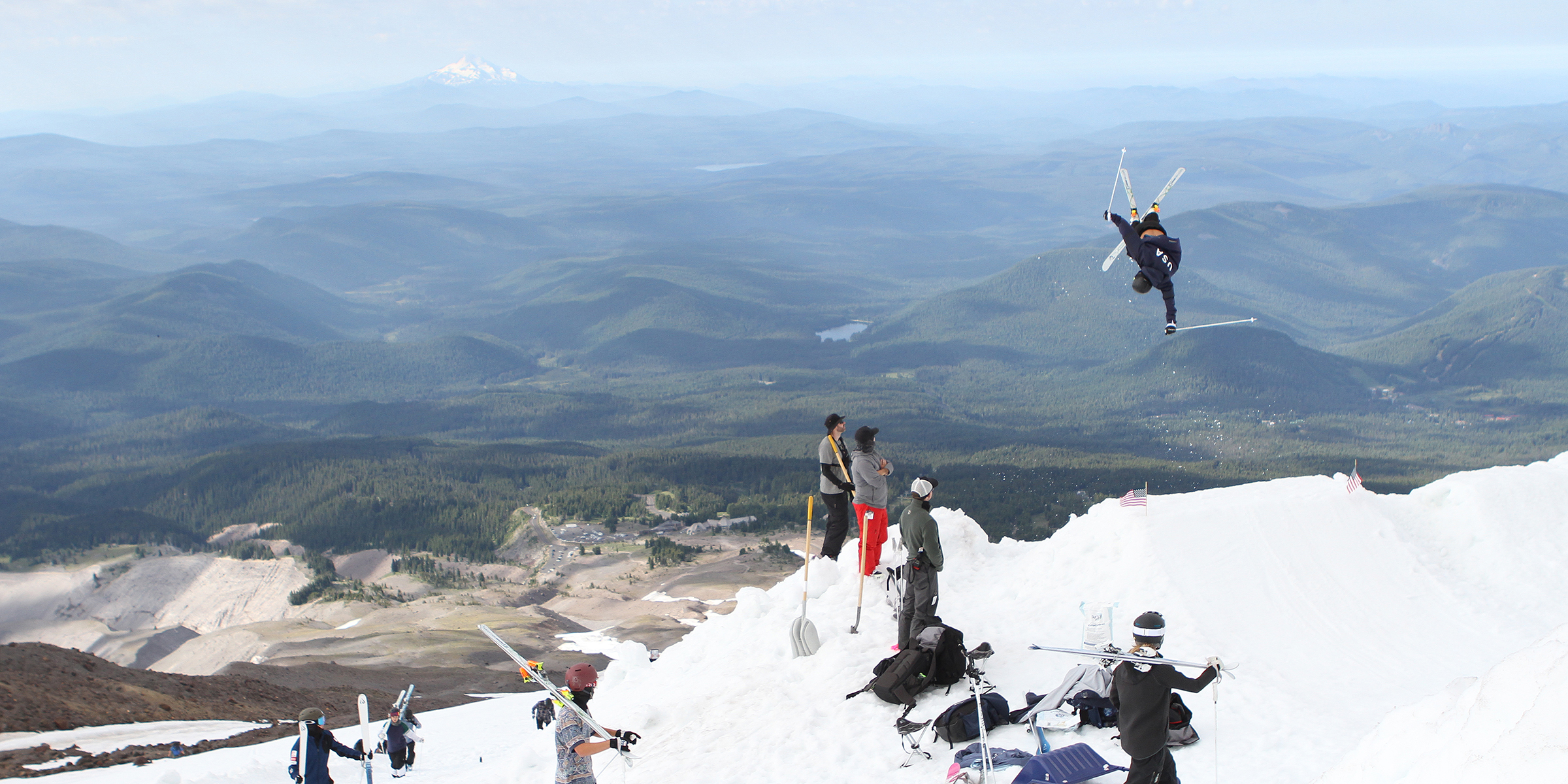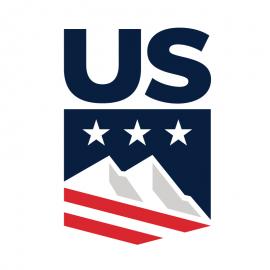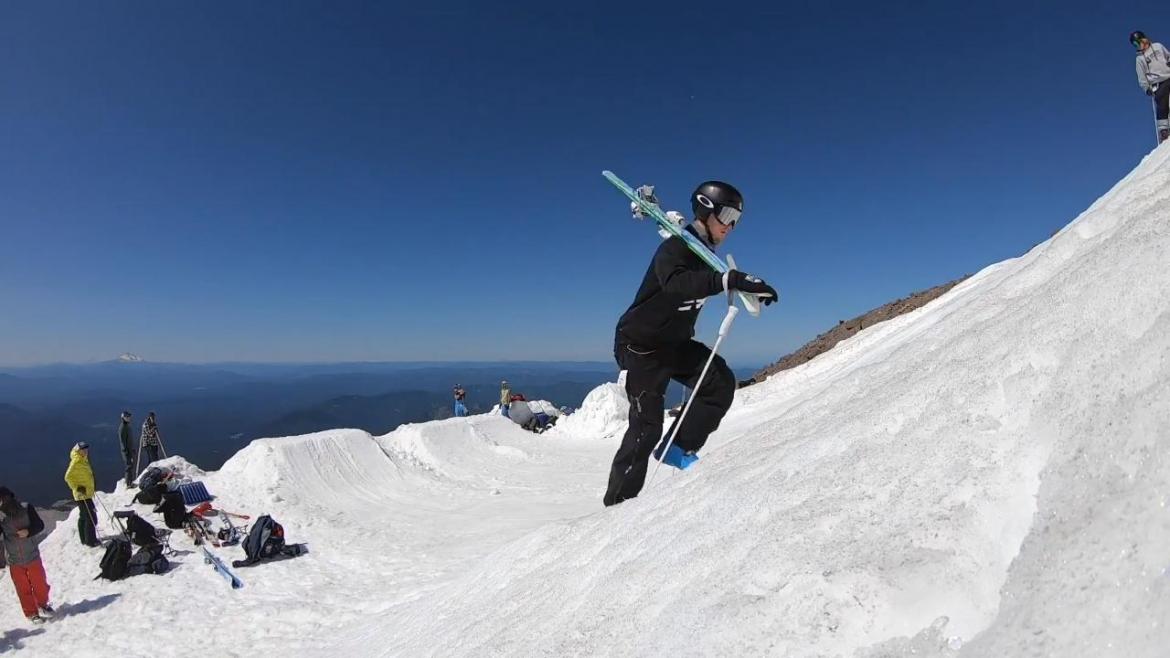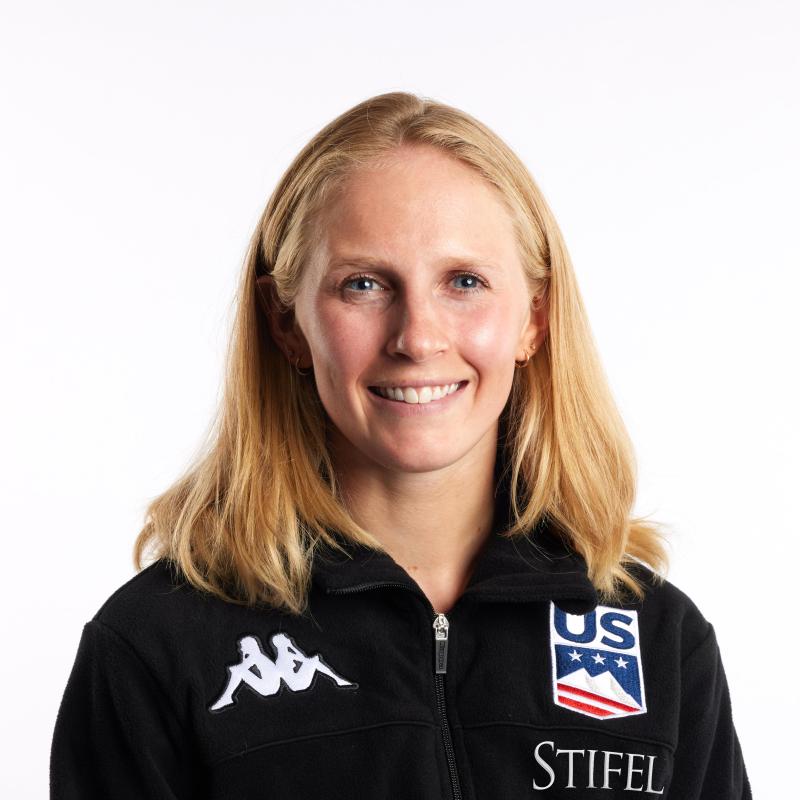Deep Learning for Moguls at Timberline Camp

Thinking outside of the box is how competitive freestyle skiing came about and at their second camp training at official partner Timberline Lodge & Ski Area, U.S. Freestyle Ski Team Head Moguls Coach Matt Gnoza had his athletes training outside of the now established “moguls box.” The July 15-28 Hood 2 Camp was all about interleaving training - the principle of mixing, or interleaving, practice on related skills together.
As per usual, athletes rose early and arrived at Timberline Lodge for 7 a.m. warm-ups for an 8 a.m. lift load. Summer temperatures kept the snow nice and pliable for the morning, and athletes were able to take full advantage at their jump site and moguls lines until about 1 p.m. when the Monarch butterfly migration appeared and the snow became soft.
But instead of block practice, such as skiing the same moguls lines an established number of times, Gnoza and his team randomized the athletes’ approach to training through variation and variability. “Variation is the approach the athlete takes and variability is the environment we create,” explained Sport Development Coach Josh Bullock. “The skill becomes much more sticky when the environment or tactic changes each time.”
At the jump site, directions like “surprise me” or “change it up, do something fun” had athletes on their toes. “The moguls mentality in the past has been ‘you do that back lay and once you look absolutely perfect, then you can do the back full,’” explained Gnoza. “‘Then once that looks perfect, maybe we’ll do a cork 7.’ But by diversifying the jumps, [the athletes are] getting to it faster. We’ve seen [a higher degree of difficulty] because we’re not ‘oh you can’t go to the higher DD until you do that one perfect.’”
When athletes moved to the moguls runs challenges like “give me two random airs” or “ski the left line, then move to the middle line” created motor problems athletes had to solve, and with gusto. The positive energy was palpable on the hill and the team was eager for whatever unknown variability would be thrown their way.
“For moguls, it’s thinking outside the box,” said Gnoza. “Big-time!” Bullock interjected. “When we review the day’s video, we go ‘Oh wow we actually like the guy that looked a little different rather than the guy who looked like a robot,’” Gnoza finished.
“[This approach] creates deep learning for when it counts because the goal of training is not to have pretty training,” said USOPC Senior Sport Psychologist Alex Cohen. “The goal of training is to prepare athletes to perform under pressure. It simulates performance and requires them to learn how to adapt. It requires patience on the part of athletes and coaches because it may be a little messier at times in training.”
Athletes have responded well to the new training techniques, which the moguls staff started implementing gradually about a year ago. This summer it is much more thought out, strategic process. “Based on their reflections, I’d say generally speaking [the athletes] have enjoyed the training,” said Bullock. “There’s a lot of ‘fun,’ ‘enjoyable,’ ‘progressive,’ those types of words being thrown around. It’s the variation that keeps you from getting stagnant, burnt out.”
“In Hood 2 my main focus was to bring my cork 720 back to snow after an ankle injury back in November,” said Hannah Soar (Somers, Conn.). “Once I got comfortable again, I started switching up my jumps between corks, fulls, and back tucks in order to vary my training. By switching up which trick I did each jump I was able to vary my training allowing me to better simulate a competition setting. Variant training helps me recognize what aspects of a jump I need to focus on the most. Since I am switching up my jump every time it’s difficult sometimes to always remember exactly what to think about for each jump every time. This is a good way for athletes to see what comes naturally and what needs more attention.”
Gnoza stresses that this isn’t a complete overhaul in the moguls’ team’s training approach, but a steady blend of best practices and new approaches, learned from sport science and acquired institutional knowledge. Instead of getting back into the groove in July and bringing a new trick to snow in October, athletes are performing them now. “They get to those tricks and they’re fresh,” said Bullock. “Which also reduces the risk of a catastrophic acute injury.” Athletes who had ramped prior to Hood 2 camp ran through their usuals during Block 1 of on-snow training, accelerating their progress towards a higher degree of difficulty jumps. “They’re getting into new stuff now, which is pretty sweet,” said Cohen.
Also, new this camp was having Cohen on site. Usually, Cohen’s work with the moguls team takes place at U.S. Ski & Snowboard’s Center of Excellence in Park City, Utah. But bringing him out for Hood 2 was a conscious decision Gnoza made as it was the first time the whole team was together with the new rookies and two new additions to the coaching staff, World Cup Coaches Joe Discoe and Riley Campbell. “I always like being where athletes are - that’s pretty impactful,” said Cohen. “It was great to have input from everybody on the team.”
Building and working on team culture is an important practice of the moguls team, so Gnoza used the opportunity to have Cohen run through a team values and communications workshop. “The best teams revisit their team values every year,” explained Cohen. “This was the second time we’ve done that with this group. The team developed their [values] last July; it was good to revisit because we have some new athletes on the team and new staff. It’s a chance for them to define who they want to be and what values they want to guide their actions. Everybody had a chance to use their voice to decide who they wanted to be as a team.”
This second Timberline camp marks the end of the team’s skills development phase in their summer prep period. Their next training stop is El Colorado, Chile, which is when the team will go into their preparing to perform phase with a focus on more top to bottom runs. “Skill development never stops, and never stops improving,” explained Gnoza. “But next you’re going to start looking for performance a little bit but also keep that diversity in there too. I think it’s important that people don’t get locked into ‘I always do the 360 on top and I always do a backflip on the bottom.’ You have to keep trying different approaches.”
Follow along with the moguls athletes of the U.S. Freestyle Ski Team via Instagram @usskiteam.


